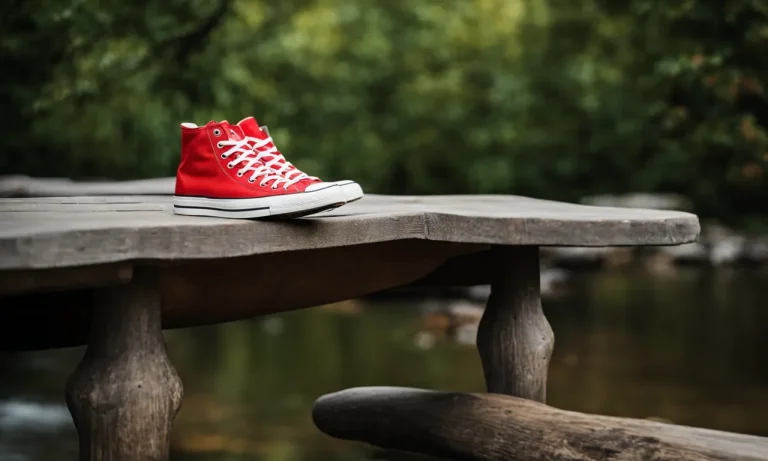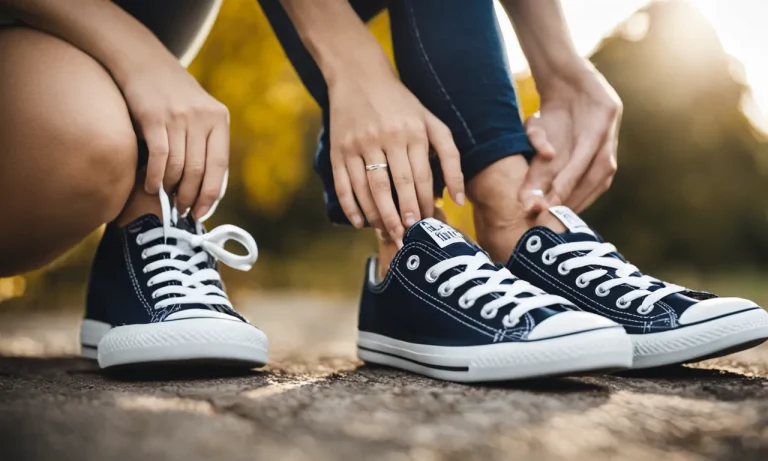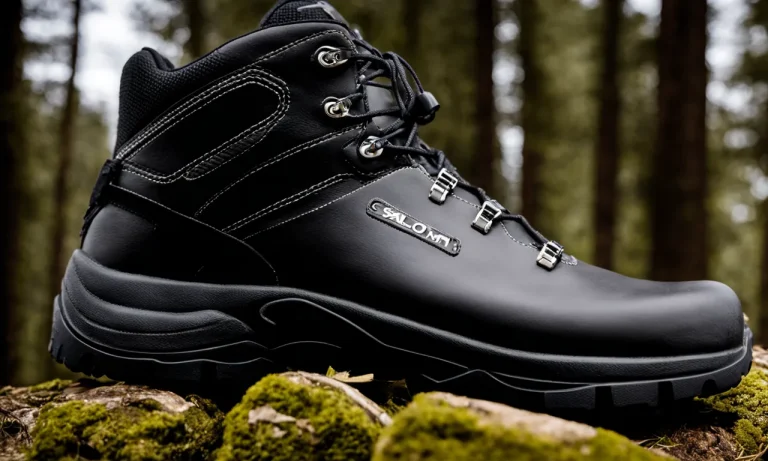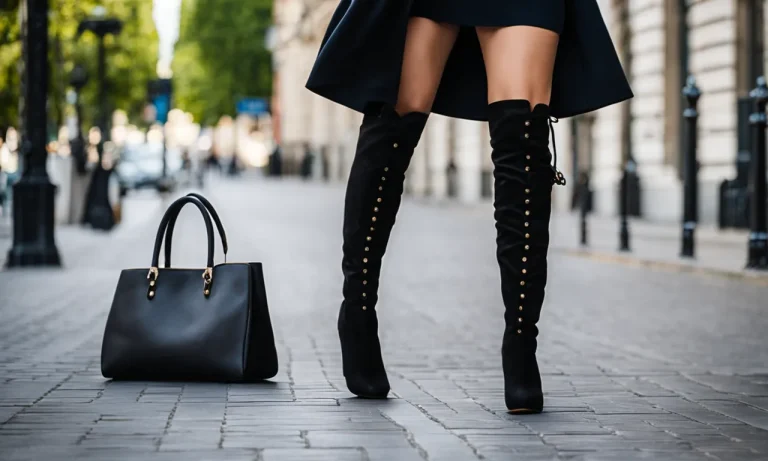If you’re looking to up your basketball game, finding the right shoe is crucial. The perfect pair provides stability, traction, and responsiveness to boost your performance on the court. In this comprehensive guide, we’ll walk you through everything that makes a basketball shoe great.
If you’re short on time, here’s a quick answer to your question: The key features of a great basketball shoe include impact protection, ankle support, traction, cushioning, fit, weight, ventilation, and durability.
Optimal traction, support, and responsiveness allow you to move quickly and safely on the court.
Cushioning and Impact Protection
When it comes to what makes a basketball shoe great, one of the key factors is cushioning and impact protection. Basketball is a high-impact sport that involves a lot of jumping, running, and quick movements. Without proper cushioning, players can experience discomfort, fatigue, and even injuries.
Heel cushioning absorbs impact
Heel cushioning is an essential feature in basketball shoes as it helps absorb the impact of landing after a jump. The heel is the area that receives the most force during a landing, and without adequate cushioning, this can lead to discomfort and potential injuries such as heel bruises or plantar fasciitis.
Good basketball shoes often incorporate technologies such as air units, gel pads, or foam materials in the heel area to provide maximum impact absorption.
Forefoot cushioning propels jumps
When it comes to jumping and propelling oneself off the ground, forefoot cushioning plays a crucial role. The forefoot is the area where the toes are located, and it is responsible for generating the power needed to jump.
Basketball shoes with responsive forefoot cushioning help to maximize energy return, allowing players to jump higher and with more efficiency. Technologies such as Zoom Air or Boost provide excellent forefoot cushioning and are commonly used in high-performance basketball shoes.
Midsole cushioning provides comfort
In addition to impact protection, midsole cushioning is essential for providing overall comfort during gameplay. The midsole is the layer between the outsole and the upper part of the shoe, and it plays a significant role in shock absorption and providing support to the foot.
A well-cushioned midsole helps reduce fatigue and provides a comfortable fit, allowing players to focus on their performance without any distractions. Materials such as EVA foam or polyurethane are commonly used in midsoles to provide optimal cushioning.
When choosing a basketball shoe, it is important to consider the specific cushioning needs based on your playing style and preferences. Some players may prefer a more responsive feel, while others may prioritize maximum impact protection.
It is always recommended to try on different shoes and see how they feel on your feet before making a purchase. Remember, the right cushioning can make a significant difference in your performance on the court.
Ankle Support
When it comes to basketball shoes, ankle support is a crucial factor to consider. The level of ankle support can greatly impact a player’s performance and help prevent injuries. Let’s explore some key aspects of ankle support in basketball shoes:
High-top vs low-top debate
The high-top vs low-top debate has been ongoing for years. High-top basketball shoes are known for their extended collar that covers the ankle. They provide excellent ankle support by limiting excessive movement and stabilizing the ankle joint.
This can be particularly beneficial for players who have had previous ankle injuries or are prone to rolling their ankles. On the other hand, low-top basketball shoes offer more freedom of movement and are generally lighter. They are favored by players who prioritize agility and speed.
Ultimately, the choice between high-top and low-top basketball shoes depends on an individual’s playing style and personal preference.
Internal support structures
Basketball shoe manufacturers have incorporated various internal support structures to enhance ankle support. These structures may include padded collars, cushioned insoles, and ankle sleeves. Padded collars provide extra cushioning and support around the ankle, reducing the risk of injuries.
Cushioned insoles absorb impact and provide comfort during intense movements. Ankle sleeves, made from compression materials, offer additional support and help stabilize the ankle joint. These internal support structures work together to minimize the chances of ankle sprains and provide a secure fit.
External ankle straps
Some basketball shoes feature external ankle straps that further enhance ankle support. These straps can be adjustable and provide a customizable fit around the ankle. They add an extra layer of stability and prevent excessive ankle movement.
Players can tighten or loosen the straps according to their preference and comfort level. The use of external ankle straps is particularly popular among players who require maximum ankle support, such as those recovering from ankle injuries or participating in high-impact activities.
It’s important to note that while ankle support is vital, it should not be the sole focus when choosing basketball shoes. Factors such as cushioning, traction, and fit also play significant roles in overall performance and comfort.
It’s recommended to try on different shoe models, consult with experts, and consider individual needs to find the perfect balance of ankle support and other essential features in basketball shoes.
Traction and Grip
When it comes to basketball shoes, one of the most important factors to consider is traction and grip. This is what allows players to make quick cuts, change direction, and maintain balance on the court. A shoe with poor traction can lead to slips and falls, increasing the risk of injury.
Let’s take a closer look at the elements that contribute to a basketball shoe’s traction and grip.
Rubber outsole compounds
The type of rubber used in the outsole of a basketball shoe plays a crucial role in its traction. Different rubber compounds offer varying levels of grip on different surfaces. Some shoes use softer rubber compounds that provide excellent grip on indoor courts, while others use harder rubber compounds that offer durability and traction on outdoor courts.
It’s important to choose a shoe that matches the type of court you’ll be playing on most often.
Tread patterns
The tread pattern on the outsole of a basketball shoe also affects its traction. A well-designed tread pattern with deep grooves and multidirectional patterns can enhance grip and prevent slippage. Additionally, the spacing between the treads can impact the shoe’s ability to shed dust and maintain traction throughout a game.
Some brands even incorporate innovative tread technologies, such as Nike’s herringbone pattern or Adidas’ wave-like pattern, to optimize traction and grip.
Multi-directional traction
Multi-directional traction is essential for basketball players who need to move quickly in all directions. A shoe with multidirectional traction provides grip not only when moving forward and backward but also when making lateral movements and pivots.
Look for shoes that feature a combination of horizontal and vertical grooves on the outsole, as well as pivot points, to ensure maximum grip during multidirectional movements.
Outdoor vs indoor traction
It’s worth noting that outdoor and indoor courts have different surfaces, which require different types of traction. Outdoor courts are typically made of concrete or asphalt, while indoor courts are made of hardwood or synthetic materials.
Outdoor shoes often have thicker, more durable outsoles with deeper treads to provide better traction on rough outdoor surfaces. Indoor shoes, on the other hand, prioritize grip on clean, smooth surfaces and may have a thinner outsole with a shallower tread pattern.
It’s important to choose a shoe that is specifically designed for the type of court you’ll be playing on.
For more information on basketball shoe traction and grip, you can visit Runners World, a reputable source for sports shoe information.
Breathability and Ventilation
One of the key factors that make a basketball shoe great is its breathability and ventilation. Basketball is a high-intensity sport that requires a lot of movement, and players’ feet can get hot and sweaty during a game.
A shoe with good breathability and ventilation helps to keep the feet cool and dry, reducing the risk of discomfort and blisters.
Mesh Uppers
Mesh uppers are a popular choice for basketball shoes due to their excellent breathability. The open-weave design allows air to circulate freely, preventing heat and moisture from getting trapped inside the shoe. This helps to keep the feet cool and comfortable, even during intense gameplay.
Additionally, mesh uppers are lightweight, providing a more agile and responsive feel on the court.
Synthetic Leather/Nylon Panels
In addition to mesh uppers, many basketball shoes incorporate synthetic leather or nylon panels. These materials are known for their durability and flexibility, but they also contribute to the shoe’s breathability.
Synthetic leather and nylon are often strategically placed in areas where the foot tends to sweat the most, such as the sides and toe box. By allowing air to flow in and out of these areas, these panels enhance the shoe’s overall breathability.
Moisture-Wicking Linings
Moisture-wicking linings are another feature to look for in a basketball shoe. These linings are designed to pull sweat away from the skin, helping to keep the feet dry and cool. Moisture-wicking linings are often made from synthetic materials like polyester or nylon, which are highly effective at absorbing and evaporating moisture.
By keeping the feet dry, these linings can also help to prevent odors and bacterial growth, ensuring a fresh and comfortable fit throughout the game.
When it comes to breathability and ventilation, it’s important to choose a basketball shoe that meets your specific needs and preferences. Some players may prioritize maximum ventilation, while others may prioritize a balance between breathability and support.
Ultimately, finding a shoe that keeps your feet cool and comfortable can greatly enhance your performance on the court.
Weight
When it comes to basketball shoes, weight is an important factor to consider. The weight of a basketball shoe can greatly impact a player’s performance on the court. There are two main considerations when it comes to weight: lightweight versus maximum support.
Lightweight vs maximum support
Lightweight basketball shoes are designed to provide players with a lighter and more agile feel on the court. They are often made with lightweight materials such as mesh or synthetic fabrics. These shoes are favored by players who prioritize speed and quickness in their game.
The lighter weight allows for faster movements and better overall agility.
On the other hand, maximum support basketball shoes are designed to provide players with added stability and protection. These shoes often have more cushioning and a heavier build compared to lightweight shoes. They are ideal for players who prioritize support and impact protection.
The added weight may limit some of the agility, but it ensures that the player’s feet are well-supported during intense movements and jumps.
Midsole foam density
The midsole foam density of a basketball shoe is another important factor related to weight. The midsole is the layer of cushioning between the outsole and the upper of the shoe. Different shoes use different types of foam and vary in density.
Higher density foam tends to be heavier, while lower density foam is lighter. The choice of midsole foam density depends on the player’s preference for cushioning and responsiveness.
Upper materials
The upper materials of a basketball shoe also contribute to its weight. Common upper materials include mesh, synthetic fabrics, leather, and knit. Mesh and synthetic fabrics are often lighter in weight compared to leather or knit materials.
However, leather and knit materials provide added durability and support. The choice of upper material depends on the player’s priorities in terms of weight, durability, and support.
It is important for players to find the right balance between weight and support when choosing a basketball shoe. The weight of the shoe should align with the player’s playing style and preferences. Ultimately, a great basketball shoe is one that offers the perfect combination of weight, support, cushioning, and durability for the individual player.
Fit and Lockdown
When it comes to basketball shoes, one of the most important factors to consider is the fit and lockdown. A shoe that fits well provides comfort and stability, allowing players to perform at their best on the court. Here are a few key features to look for:
Snug heel counter
The heel counter is the back part of the shoe that wraps around the heel. A snug heel counter ensures that the foot stays securely in place, preventing any unnecessary movement or slippage. This is particularly important during quick cuts and lateral movements, where stability is crucial.
A well-fitting heel counter can help prevent ankle injuries and improve overall performance.
Lace-up closure
The lace-up closure system is the most common way to secure a basketball shoe. It allows for personalized fit and adjustability, ensuring that the shoe conforms to the shape of the foot. When lacing up, it’s important to achieve a balance between a snug fit and not overly tight.
Too loose, and the shoe may lack support; too tight, and it may cause discomfort or restrict movement. Finding the right tension is key to achieving optimal lockdown.
Internal straps
Some basketball shoes feature internal straps or bands that provide additional support and lockdown. These straps are usually located around the midfoot or forefoot area and can be adjusted to customize the fit.
They work in conjunction with the lace-up closure system to enhance stability and prevent any unwanted movement inside the shoe. Internal straps can be especially beneficial for players with wider feet or those who require extra support.
Width sizing
Having the correct width sizing is essential for a comfortable fit. Not all basketball shoes come in a wide range of widths, but for those who require it, finding a shoe that offers different width options can make a significant difference.
Wearing a shoe that is too narrow can cause discomfort, while a shoe that is too wide may lack stability. It’s crucial to find the right balance to ensure a proper fit and lockdown.
Remember, finding the right fit and lockdown is vital for basketball performance and injury prevention. It’s always a good idea to try on different brands and models to find the one that suits your foot shape and preferences the best.
Additionally, consulting with a knowledgeable salesperson or seeking advice from professional athletes can provide valuable insights in selecting the right basketball shoe for you.
Durability
Outsole rubber thickness
One of the key factors that contributes to the durability of a basketball shoe is the thickness of its outsole rubber. The outsole is the part of the shoe that comes into direct contact with the court, and it is subjected to a lot of wear and tear.
A thicker outsole rubber provides better protection against abrasion and extends the lifespan of the shoe. According to Sports Science, a renowned sports research website, studies have shown that shoes with thicker outsole rubber tend to last longer and maintain their grip on the court for a greater period of time.
This is especially important for players who engage in intense and frequent basketball activities.
Upper material strength
Another important aspect of durability in basketball shoes is the strength of the upper material. The upper is the part of the shoe that covers the foot and provides support and protection. A strong and durable upper material ensures that the shoe can withstand the rigors of the game and resist tearing or ripping.
High-quality materials such as synthetic leather or mesh with reinforced overlays are commonly used in basketball shoe uppers to enhance durability. These materials are designed to withstand the constant movements, cuts, and jumps that players make on the court.
Additionally, some manufacturers incorporate technologies like TPU (thermoplastic polyurethane) or carbon fiber plates to reinforce the upper and improve its overall strength.
Stitching and glues
The stitching and glues used in the construction of a basketball shoe also play a significant role in its durability. Well-stitched shoes with strong, reinforced seams are less likely to come apart or show signs of wear and tear.
Additionally, the type of glue used to attach different components of the shoe can impact its durability. High-quality, durable adhesives ensure that the shoe remains intact even after prolonged use and intense physical activity.
Some basketball shoe manufacturers even use specialized stitching techniques and high-strength glues to enhance the overall durability and longevity of their products.
When considering the durability of a basketball shoe, it is important to look for these key features: a thick outsole rubber, a strong upper material, and durable stitching and glues. By investing in a shoe that excels in these areas, players can ensure that their footwear will last longer and withstand the demands of the game.
Conclusion
With the right pair of basketball shoes, you’ll have the tools to elevate your game. Cushioning, support, traction, breathability, weight, fit, and durability all play key roles. Do your research to find the ideal shoe for your foot type, position, and playing style.
With optimal footwear, you can push your performance to new heights on the court!






